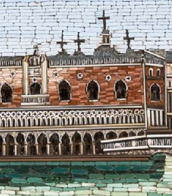prähistorische periode





Alfred William (Willy) Finch was a ceramist and painter in the pointillist and Neo-Impressionist style. Born in Brussels to British parents, he spent most of his creative life in Finland. In 1883 he became a founding member of Les XX, a group of twenty Belgian painters, designers and sculptors, who rebelled against the prevailing artistic standards and outmoded academism. He was impressed by the works of Georges Seurat and Paul Signac and changed his own painting style from a more realistic approach into a pointillistic style. In the following years, Finch became one of the leading representatives of his style in Belgium, along with Théo van Rysselberghe. During the early 1890s Finch switched careers from painting to pottery, upon the realization that he couldn't make a living by painting. In 1897, invited by count Louis Sparre, Finch moved to Porvoo, Finland, to head the Iris ceramics factory, and influenced the development of the local Jugendstil. After the factory was closed, Finch resumed his painting career.


Hans Mielich was a German painter of the late Renaissance, mid-16th century. He is known as a painter, graphic artist, and court painter to Duke Albrecht V of Bavaria.
Mielich painted many religious paintings, portraits, and historical canvases (usually on boards), and he also decorated altars in churches. After a trip to Rome, his style became close to Italian Mannerism. His most famous work is the altarpiece of the Cathedral of Our Lady of Ingolstadt. He was also famous as the author of miniatures for manuscripts, including the Duchess Anna of Bavaria's Treasure Book, made for Duke Albrecht V and his wife Anna of Bavaria in 1555. In the same year, Milich became head of the Munich Artists' Guild.

























